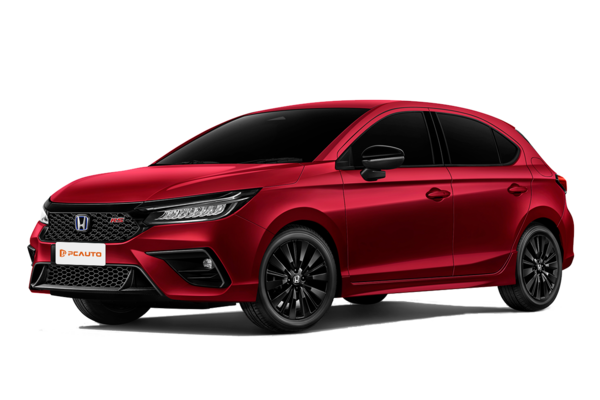Q
tandem car park meaning
A tandem car park refers to a front-and-back sequential parking space design, usually found in parking lots with limited space—you'll spot these a lot in Malaysian shopping malls or older residential areas. This setup lines up two or more parking spots one after another, sharing a single access lane. The catch? The car at the back can't get in or out until the one in front moves first. On the plus side, it saves space and crams in more parking spots, but convenience takes a hit. It works best for short stays or places with high vehicle turnover.
In Malaysia, you'll find this layout in parts of malls like Pavilion KL or Mid Valley. Pro tip: Keep an eye on ground markings or signs when parking to avoid blocking the works. If you're stuck with a tandem spot, aim for the front one to cut down on waiting time. And don't forget to engage the handbrake and leave your contact info—just in case someone needs you to move.
These days, some newer Malaysian parking garages are stepping up with smart systems or angled parking to make things smoother. But tandem spots still stick around because they're cheap and adaptable. Knowing the ins and outs of these designs? It’ll help you park smarter, not harder.
Special Disclaimer: This content is published by users and does not represent the views or position of PCauto.
Popular Models
Related Q&A
Q
Is 2000cc the same as 2 litres?
Yes, 2000cc and 2 liters refer to exactly the same engine displacement. "cc" stands for cubic centimeter, and since 1 liter equals 1000 cubic centimeters, 2000cc is simply 2 liters – just different ways of saying the same thing.
In the automotive world, engine size is typically labeled in either liters (L) or cubic centimeters (cc). You'll see things like 1.5L or 1500cc, 1.8L or 1800cc – all describing the total cylinder volume. Generally, a larger displacement means more power, though often at the cost of higher fuel consumption.
That said, while displacement is a key spec, it doesn’t tell the whole story. Factors like turbocharging, cylinder count, and fuel injection systems also play a huge role in performance. So you can’t judge an engine purely by its size.
Also worth noting: different markets have their own preferences – some regions lean toward liters, others use cc more often. But at the end of the day, they’re measuring the exact same thing.
Q
Why is engine capacity measured in litres?
Engine displacement is measured in liters because it's intuitive and universally recognized. As a unit of volume, liters directly represent the total working capacity of all cylinders, making it easier for consumers to compare the power potential of different models—for instance, a 1.5L engine typically delivers more power but higher fuel consumption than a 1.0L.
This standardized approach traces back to early European automotive engineering, where engineers used total piston displacement (swept volume) to gauge performance potential. The metric system, with liters, simplified calculations and cross-comparisons.
That said, modern turbocharging has complicated the link between displacement and power. A 1.4T engine, for example, might outperform a traditional 2.0L naturally aspirated unit. So when car shopping, it’s wise to also check peak horsepower and torque figures.
On a practical note, displacement still affects road tax and insurance costs in many used-car markets, though real-world fuel efficiency hinges more on driving habits and engine tech.
Q
Which car has the highest engine capacity?
The Dodge Viper SRT Final Edition currently holds the title of the largest-displacement production car in the world, packing an 8.4-liter V10 naturally aspirated engine that delivers a robust 645 horsepower. This American muscle car is renowned for its massive displacement and rear-wheel-drive setup.
In local markets, while such high-displacement models are relatively rare, it’s worth noting that engine size doesn’t always equate to performance. Modern turbocharging tech allows smaller engines to punch above their weight—for instance, a tuned 2.0-liter turbocharged engine can match the output of a 3.5-liter naturally aspirated unit.
Plus, with tightening emissions regulations, many automakers are shifting toward hybrid systems to balance power and eco-friendliness. The future may see big-displacement engines phased out in favor of efficient turbocharged or electrified setups. But for now, they still have a loyal following among drivers who crave raw, unfiltered performance.
Q
What is a good engine capacity for a car?
The ideal engine displacement for your car really depends on your daily needs and driving habits.
If you mostly drive in the city, a smaller engine—say, 1.5L to 1.8L—is more than enough. These engines are fuel-efficient, cheaper to maintain, and great for stop-and-go traffic. You’ll find this setup in a lot of Japanese cars or locally assembled models.
Now, if you frequently hit the highway or want more power, a mid-range engine (2.0L to 2.5L) makes more sense. It delivers better acceleration and stability at higher speeds, which is ideal for family cars or occasional long trips.
For those who crave performance or often carry heavy loads, a bigger engine—3.0L and above—will give you that extra punch. But keep in mind, fuel consumption and road tax costs jump noticeably.
Here’s the thing, though: turbocharging has changed the game. Smaller turbo engines—like a 1.4T or 1.5T—can deliver power close to larger engines while staying relatively efficient. And if you’re open to alternatives, hybrid systems use electric motors to take some load off the engine, reducing the need for big displacements.
My advice? Think about your budget and how you actually use the car. Also, factor in annual road tax and insurance—those costs can vary a lot depending on engine size.
Q
What is the engine capacity?
Engine displacement refers to the total volume swept by all the pistons in an engine's cylinders as they move from top to bottom dead center. It's typically measured in liters (L) or cubic centimeters (cc)—like 1.5L or 1500cc. Displacement directly impacts an engine's power output and fuel efficiency: generally, bigger displacement means more power but also higher fuel consumption.
These days, you'll find engines ranging from tiny 1.0L units in compact cars to 3.0L+ beasts in high-performance models. Thanks to turbocharging, smaller engines can now deliver power close to their larger-displacement counterparts. While hybrids and EVs don't use displacement to gauge performance, it remains a key spec for traditional combustion engines.
When car shopping, don't just focus on displacement—consider factors like transmission tuning and vehicle weight too. Many modern small-displacement turbo engines strike a solid balance between power and efficiency, making them great for daily driving.
Q
How much is a fuel tank for a car?
The cost of a car fuel tank can vary quite a bit depending on the model, material, and brand. For regular family cars, you’re usually looking at between RM500 to RM2,000. If it’s a metal tank or for a luxury vehicle, expect to pay more.
Tank prices also depend on capacity and design complexity—like larger SUV tanks or specialized hybrid fuel tanks, which tend to be pricier. On top of the tank itself, labor costs for replacement can range from RM200 to RM500, depending on the workshop’s rates.
Always go for OEM or certified aftermarket tanks to ensure safety and compatibility. It’s also a good idea to check your tank regularly for leaks or rust, especially during the rainy season when humidity can speed up corrosion. This helps extend its lifespan and avoids safety risks. If you notice a sudden drop in fuel efficiency or smell gasoline, it could be a tank issue—get it checked at a professional repair shop ASAP.
Q
What happens when the fuel tank is empty?
When the fuel tank is completely empty, the vehicle will stall due to lack of fuel supply, causing the engine to lose power. At this point, steering and brake assist systems will gradually weaken, requiring the driver to safely pull over immediately.
Modern fuel pumps rely on gasoline for cooling, so driving on empty for extended periods can lead to overheating and costly damage. Some models trigger warning lights and display remaining range when fuel is critically low, but relying solely on these estimates is risky—actual consumption varies based on road conditions, AC usage, and other factors.
A good rule of thumb? Refuel before the gauge dips below a quarter tank to avoid sucking up debris from the bottom of the tank. If you do get stranded, roadside assistance can deliver emergency fuel, though mixing different octane grades may affect engine performance—especially in high-performance turbocharged cars.
Pro tip: Regularly check your fuel filter to prevent clogs, and maintaining at least half a tank in humid climates helps minimize condensation buildup, which is crucial for tropical regions.
Q
What SUV has a 116 inch wheelbase?
Currently, there aren’t many SUV models on the market with a wheelbase stretching to 116 inches (around 2,946 mm). But one that stands out is the Ford Mustang Mach-E—its wheelbase hits exactly 116 inches. This all-electric SUV has drawn plenty of attention with its sporty design and solid range.
Then there are larger SUVs like the Lincoln Nautilus (roughly 117-inch wheelbase) and the Cadillac XT6 (about 116.7 inches), which come close in size, offering more cabin space and upscale features.
Wheelbase is a key factor in determining interior room—longer usually means better legroom and more stable handling, though it can also hurt maneuverability and parking ease. So when shopping for an SUV, don’t just focus on wheelbase; consider performance, specs, and how you’ll actually use the vehicle.
Q
What SUV has a 119 inch wheelbase?
Currently, SUVs with a 119-inch (approx. 302 cm) wheelbase include full-size models like the Chevrolet Tahoe and GMC Yukon. These vehicles typically offer three-row seating and robust powertrains, making them ideal for family trips or situations requiring ample space.
Wheelbase is a key factor in determining interior room. A longer wheelbase enhances ride comfort and high-speed stability, though it can reduce maneuverability on tight roads. If you're considering one of these SUVs, also pay attention to overall length and turning radius to ensure it suits your local driving conditions.
Full-size SUVs may not match the fuel efficiency of smaller crossovers, but their V8 or hybrid powertrains deliver superior towing capacity—perfect for those who need to haul heavy loads. Luxury brands may offer models with similar wheelbases, but expect higher prices and more premium features. Weigh your budget and needs before deciding.
Q
Does wheelbase affect fuel efficiency?
Yes, wheelbase does affect fuel efficiency. Generally speaking, a longer wheelbase adds weight and increases aerodynamic drag, which can slightly reduce mileage since the engine has to work harder to overcome these factors—especially at higher speeds. But the actual impact depends on the specific model and driving conditions. Other elements like body design, engine technology, and driving habits often play a bigger role in fuel consumption.
That said, vehicles with a longer wheelbase tend to offer better stability and ride comfort, making them ideal for long-distance driving, while shorter wheelbases improve agility for city driving. So when choosing a car, it’s worth balancing fuel economy with your actual needs.
One more thing: modern advancements—lightweight materials, aerodynamic tweaks, and efficient powertrains—have significantly reduced the effect of wheelbase on fuel efficiency. Instead of overthinking this one factor, focus on the overall performance and real-world fuel economy.
Popular Cars
Model Year
Car Compare
Car Photo
Latest Q&A
Q
What is the capacity of a 2 litre engine?
A 2-liter engine refers to a total displacement of 2000 cubic centimeters (cc) across all cylinders—that's 2.0 liters. This number represents the combined volume swept by the pistons moving from top to bottom dead center in each cylinder. Displacement is one of the key indicators of an engine's power output—generally, a larger displacement means more horsepower and torque, though often at the cost of higher fuel consumption.
In everyday driving, 2.0-liter engines strike a solid balance between performance and efficiency, which is why they’re commonly found in everything from compact sedans and SUVs to sportier models. That said, real-world performance isn’t just about displacement. Tech like turbocharging, direct fuel injection, or hybrid systems can make engines of the same size behave very differently.
These days, advancements in forced induction mean smaller turbocharged engines can deliver power comparable to—or even surpassing—older, bigger naturally aspirated engines while sipping less fuel. It’s no surprise that more automakers are heading in this direction.
Q
Is 2000cc the same as 2 litres?
Yes, 2000cc and 2 liters refer to exactly the same engine displacement. "cc" stands for cubic centimeter, and since 1 liter equals 1000 cubic centimeters, 2000cc is simply 2 liters – just different ways of saying the same thing.
In the automotive world, engine size is typically labeled in either liters (L) or cubic centimeters (cc). You'll see things like 1.5L or 1500cc, 1.8L or 1800cc – all describing the total cylinder volume. Generally, a larger displacement means more power, though often at the cost of higher fuel consumption.
That said, while displacement is a key spec, it doesn’t tell the whole story. Factors like turbocharging, cylinder count, and fuel injection systems also play a huge role in performance. So you can’t judge an engine purely by its size.
Also worth noting: different markets have their own preferences – some regions lean toward liters, others use cc more often. But at the end of the day, they’re measuring the exact same thing.
Q
Is a 1.5 litre engine 1500cc?
Yes, a 1.5-liter engine is indeed 1500cc. Both "liter" and "cc" (cubic centimeters) are units used to measure engine displacement. Since 1 liter equals 1000cc, 1.5 liters naturally translates to 1500cc.
Engine displacement refers to the total volume of air and fuel mixture an engine's cylinders can draw in during one complete cycle. It’s a key indicator of an engine’s size and power potential—generally, the larger the displacement, the more power it can produce, though often at the cost of higher fuel consumption.
That said, modern engine tech has come a long way. Many small-displacement turbocharged engines now deliver power outputs close to—or even surpassing—larger naturally aspirated engines, all while maintaining better fuel efficiency. That’s why we’re seeing so many cars today adopting 1.5L turbocharged engines as the sweet spot.
Of course, displacement isn’t the only factor to consider. Fuel type, cylinder arrangement, compression ratio, and other engineering choices all play a role in how an engine actually performs in the real world.
Q
Why is engine capacity measured in litres?
Engine displacement is measured in liters because it's intuitive and universally recognized. As a unit of volume, liters directly represent the total working capacity of all cylinders, making it easier for consumers to compare the power potential of different models—for instance, a 1.5L engine typically delivers more power but higher fuel consumption than a 1.0L.
This standardized approach traces back to early European automotive engineering, where engineers used total piston displacement (swept volume) to gauge performance potential. The metric system, with liters, simplified calculations and cross-comparisons.
That said, modern turbocharging has complicated the link between displacement and power. A 1.4T engine, for example, might outperform a traditional 2.0L naturally aspirated unit. So when car shopping, it’s wise to also check peak horsepower and torque figures.
On a practical note, displacement still affects road tax and insurance costs in many used-car markets, though real-world fuel efficiency hinges more on driving habits and engine tech.
Q
What is the formula for engine capacity PDF?
The formula for calculating engine capacity is: displacement (cc)=π/4 x cylinder diameter ² x piston stroke x number of cylinders, where π/4 can be simplified to 0.785, cylinder diameter and piston stroke are usually measured in millimeters (mm), and the final result is expressed in cubic centimeters (cc) or liters (L). For example, a 4-cylinder engine with a single cylinder diameter of 80mm and a piston stroke of 90mm has a displacement of 0.785 × 80 ² × 90 × 4 ≈ 1809cc or 1.8L. Displacement directly affects the engine's power output and fuel efficiency. Generally, the larger the displacement, the higher the horsepower, but fuel consumption also increases relatively. However, modern turbocharging technology can allow small displacement engines to output power close to that of large displacement engines while also considering fuel economy. When choosing engine displacement, daily usage scenarios should be considered. Small displacement engines below 1.5L are suitable for urban commuting, while engines above 1.8L can be considered for frequent long-distance driving or heavy loads. In addition, the displacement is also linked to road taxes, and common models in the local market are mostly concentrated between 1.3L and 2.5L to balance performance and vehicle costs.
View MoreLatest News

Jaecoo J5 is about to launch, following Honda CR-V, Honda HR-V will also be challenged
RobertDec 19, 2025

Euro NCAP releases final batch of 2025 crash test results: Four models, including the facelifted Mazda CX-5, receive five-star ratings
Kevin WongDec 18, 2025

Perodua Traz receives ASEAN NCAP five-star safety rating, surpassing Toyota Yaris Cross
RobertDec 18, 2025

Why hasn't Perodua launched the Traz equipped with e-Smart Hybrid?
JohnDec 18, 2025

Perodua Traz VS Toyota Yaris Cross, where does the Traz fall short?
RobertDec 18, 2025
View More




 Cars
Cars













